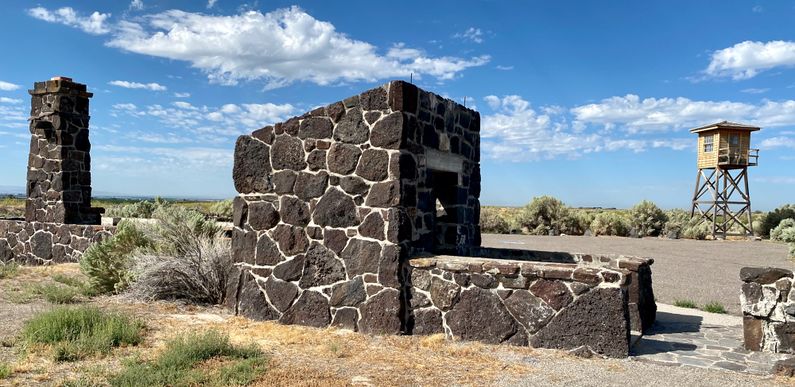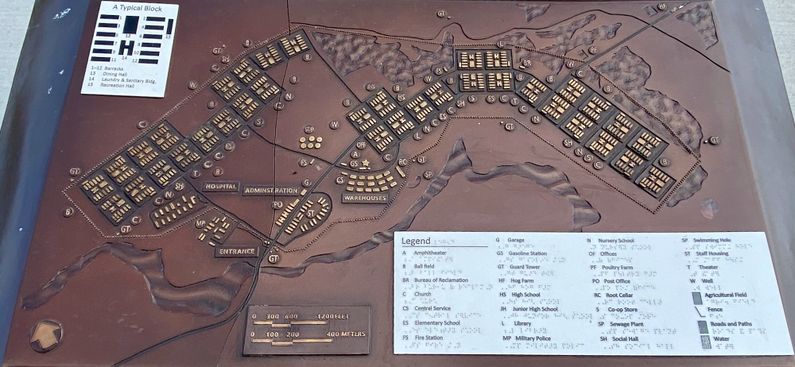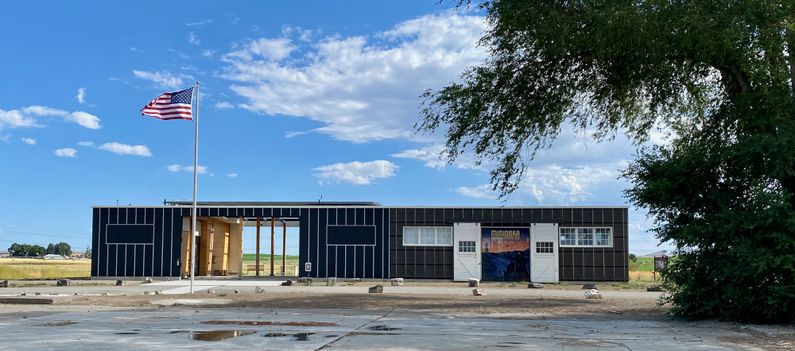Minidoka War Relocation Center
|
HistoryEstablished in 1942, the Relocation Center was built by the Morrison-Knudsen Company. The center became the Minidoka War Relocation Center run by the civilian War Relocation Authority (WRA).  The relocation centers were not considered by authorities to be either concentration camps or internment camps but the perception was otherwise. Barbed wire fencing enclosed most of the living area, the guard towers with searchlights and the military police were always visible.
Residential Areas Plans for facilities at the center included 44 residential blocks however only 35 residential blocks were constructed at Minidoka leaving the remainder empty. Each built block had fifteen, 20' by 100' barracks structures and five service buildings. The service buildings included a 40' by 100' mess hall, a 20' by 50' laundry, two latrines and an ironing room. These buildings were all temporary military-style Theater of Operations (TO) structures of wood frame construction with tar paper covering the outer walls and roof. These buildings were designed to last two years but because of the heat, dry climate, and green lumber, the buildings began to deteriorate early. The buildings were not insulated or properly partitioned for family groups. Other FacilitiesOther facilities at the center included most of the infrastructure that would be required for any town of 10,000. The administrative area included admin buildings, a town hall, a post office, mess hall, a police station, and staff housing. There was a warehouse group & motor pool group. Other groups included a Hospital and orphanage Group, schools, and fire protection. Agricultural facilities included a hog farm and chicken ranch as well as crop fields. The military police provided external security. Closed on 28 Oct 1945 when the last evacuee departed. Current StatusNow part of Minidoka National Historic Landmark. The Visitor Center Building is open Friday through Sunday from May 26th to September 3rd. The center is open for self-guided tours all year long. Guided tours are available at 11 a.m. on Saturdays and Sundays during the summer season when the Visitor Center is open. The guided tour includes a walking tour of the center with entry to two buildings, the Barracks and Mess Hall, which are being restored to better reflect the original buildings, they are currently mostly empty (2023}.
See Also: Sources:
Links: Visited: 27 Aug 2023
| ||||||||||||||||||||||||


